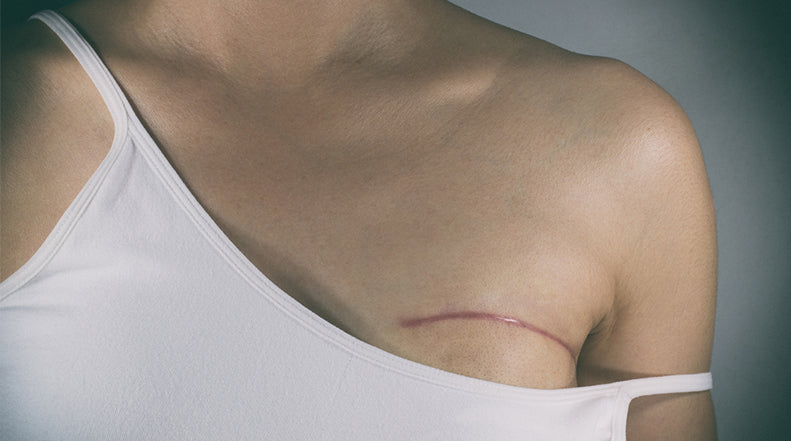How Does Age Affect the Scar Healing Process?

In a perfect world, wounds would always heal quickly, easily and without interruptions. However, we live in an imperfect world where there are conditions affecting the wound healing process every second of the day. Age is one of the many factors that influences wound healing and scarring.
WHY DOES AGE AFFECT WOUND HEALING?
Older bodies need more time to mend themselves after injury. When a wound occurs, the body tries to and needs to repair itself as quickly as possible to restore its protective skin barrier. The skin has many functions in addition to keeping out anything that might harm us. It also regulates temperature and hydration. With age, all of these functions of our skin deteriorate, and need to be considered for best possible wound recovery
FIBROBLASTS AND COLLAGEN
Fibroblasts are a type of cell that synthesizes collagen. They are the most common cells of the connective tissues. Put more simply, fibroblasts are a type of cell that manufactures and maintains the body's connective tissues. This is extremely important to the healing process because collagen is the primary substance that closes an open wound during healing. A lack of fibroblasts in older age creates a reduced production of collagen, which in turn is going to slow down the healing process.
Elastin is also a product secreted by fibroblasts. Elastin is a stretchy protein that acts like a rubber band. It helps tissues return to their previous state after they have been stretched or altered. This is also important to the healing process because skin is pulled and moved even when there is an open wound. Reduced fibroblasts in aged skin causes it to be less elastic and appearing more wrinkled than younger skin.
The dermis of aged skin contains actually displays fewer fibroblasts and reduced amounts of collagen compared to younger skin. Fibroblasts and collagen Both of which are heavily involved in the wound healing process and reduced amounts can hinder the wound healing process. Without them the stunting of healing can occur.
AGE RELATED DISEASES AND CONDITIONS
Age related diseases that occur in a older person may also impair the natural healing process of a wound. Diabetes and cardiovascular disease both significantly impair blood flow within the body and can damage the small capillaries in the skin, especially in the feet and lower legs. If blood does not properly circulate in the wounded area, it becomes malnourished and low in oxygen which will greatly slow down the healing process. Damaged cells cannot be removed and helpful cells like white blood cells are not able to reach the wound site to prevent infection.
Oxygen is critically important in the wound healing process. Proper oxygen levels can be maintained by exercises and mobility. A high percentage of the older population has low oxygen levels which can interfere with healing. Smoking also has a negative effect on oxygen levels in the skin, further complicating things.
HOW AGE AFFECTS SCARRING
With aging comes many changes to the body. There is a natural progression of how skin looks at birth to how it looks in an older person. Sweat and oil glands naturally reduce in number making skin much drier. These conditions make wounds take longer to heal than moist, hydrated skin Older skin becomes less resilient and less elastic which also makes it much harder for wounds to heal.
Adults who have not quite reached old age, maintain most of their skin’s elasticity. This means that any scars that are being produced during this time of life are most likely going to appear thinner. Damage from sun exposure is also slower to repair, so scars should always be protected from the sun. Proper cleaning and covering of the wound is very important as older skin also has a higher risk of infection due to conditions noted above. And all medications , vitamins and herbal supplements should be discussed with your physician as many may have a negative impact on blood clotting and healing.
While it may seem like scarring is inevitable in old age, there is no need to live with an unattractive scar. Even though your scars may never fully disappear, you can make them much less noticeable with the use of silicone gels and sheets. NewGel+ is a leading brand in scar treatments and their products work for skin of all ages. There are a wide variety of products to choose from and they will help address the challenges inherent in healing older skin such as hydration, protection and oxygenation. Remember, it is never too late to start healing scars and helping your skin.




Comments